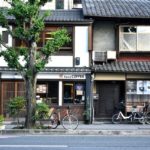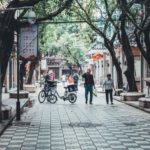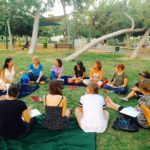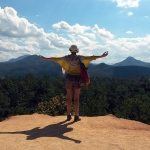Chasing My Dreams to Machu Picchu

I had never heard of Machu Picchu, when, as a 21 year old I left Iowa for Brasil as a Peace Corps Volunteer. Two years later, having taken every opportunity to explore South America that my rather loosely supervised Peace Corps service afforded, I knew about Machu Picchu and was eager to see it.
My Peace Corps service ended in October of 1968, and I sent a letter to my parents that I would be home for Christmas. I had already spent time in Uruguay, Paraguay, Argentina and Chile, but still had much to see.
My three month adventure meant a lot of travel by bus and meals of bread and cheese. During our service, the Peace Corps paid us $75 a month and also had been putting aside money to be given to each volunteer upon our arrival back in the states. If we petitioned, we could obtain a portion of that to make our own way home.
Although planned as a solitary trip, it was enlivened by other Peace Corps Volunteers or backpackers I met along the way.
Hitching a clandestine ride on a small Brazilian Air Force plane to Manaus, taking an Amazon cargo boat with hammocks on the deck for sleep accommodations, ferrying across Lake Titicaca, I was enjoying the journey, “Seeing the most for the least.”
Although planned as a solitary trip, it was enlivened by other Peace Corps Volunteers or backpackers I met along the way, and fell in with for a few days or weeks. So it was, that when I boarded the train from Cuzco to Macchu Picchu, I was in a group of five eager to explore the mountain top village as cheaply as possible.
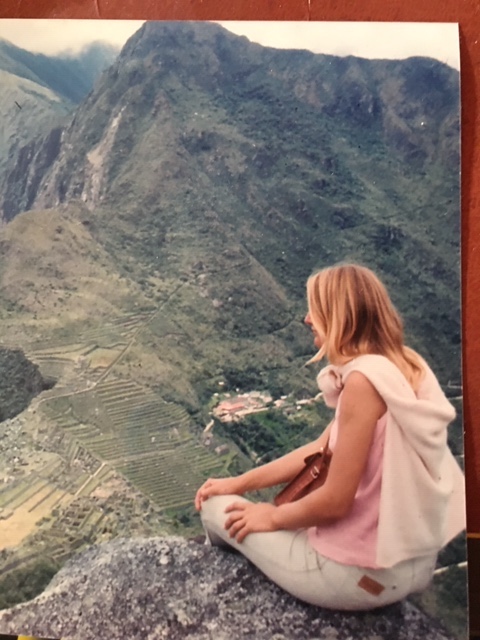
There was a tourist lodge a short hike from the ruins, but we didn’t even approach it. In the afternoon sun, we headed for the Incan village, each of us carrying a back pack or small suitcase. After stashing our belongings within the wall of one of the farthest structures, we set about exploring the wonders of the site.
Apparently, the few other tourists had gone directly to a lodge near the train depot, with intention of seeing the ruins the next morning. We had the place to ourselves. We climbed the thick walls, stood where the long disappeared wooden roofs or doors might have been, wondered where the huge stones were from, how they were brought here, how the stones were cut at multiple angles to fit together exactly.
As the plaintive tunes echoed through the still mountain air, we could imagine that we were living there as the Incans had, hundreds of years earlier.
When the sun lowered, casting strange shaped shadows among the powerful structures, we each brought forth what food we had carried and ate a shared meal: bread, cheese, wine, nuts and candy bars. As the last sunlight disappeared, we marveled at the profusion of stars, the Southern Cross and the Milky Way, brilliant in the inky sky.
Jon, a Peace Corps Volunteer who had spent two years as a music tutor and flautist with the Santiago National Orchestra, brought out one of the wooden Indian flutes he had acquired and played ancient tunes he had heard, notated and memorized. As the plaintive tunes echoed through the still mountain air, we could imagine that we were living there as the Incans had, hundreds of years earlier.
In the chilly mountain air, we huddled together for warmth like a litter of puppies, each donning whatever warm garb we had. I had bought an alpaca sweater earlier in my travels, and also pulled on my llama wool poncho.
Llamas grazing in the ruins ignored us as we awakened in the cool early morning sun. I climbed higher up the mountain behind the ruins to catch the full warmth of the sun, away from the shadows the mountain cast. And there I found our breakfast: wild strawberries!
We marveled at the profusion of stars, the Southern Cross and the Milky Way, brilliant in the inky sky.
In late morning, warmed by the sun and sated with strawberries, we gathered our bags and trudged back to the train station.
I understand that thousands of tourists visit Machu Picchu each day now. It has been named a UNESCO World Heritage Site. People must apply for tickets ahead of time and are given specific times for a guided tour. Permitted walking areas are marked with barriers. A whole village of lodges, restaurants and craft shops has grown up near the site.
Over the years since my time in South America, I’ve had opportunities to see Machu Picchu again, but I’m just not interested. Some memories are just too special to try to relive.
Photo by Unsplash.

